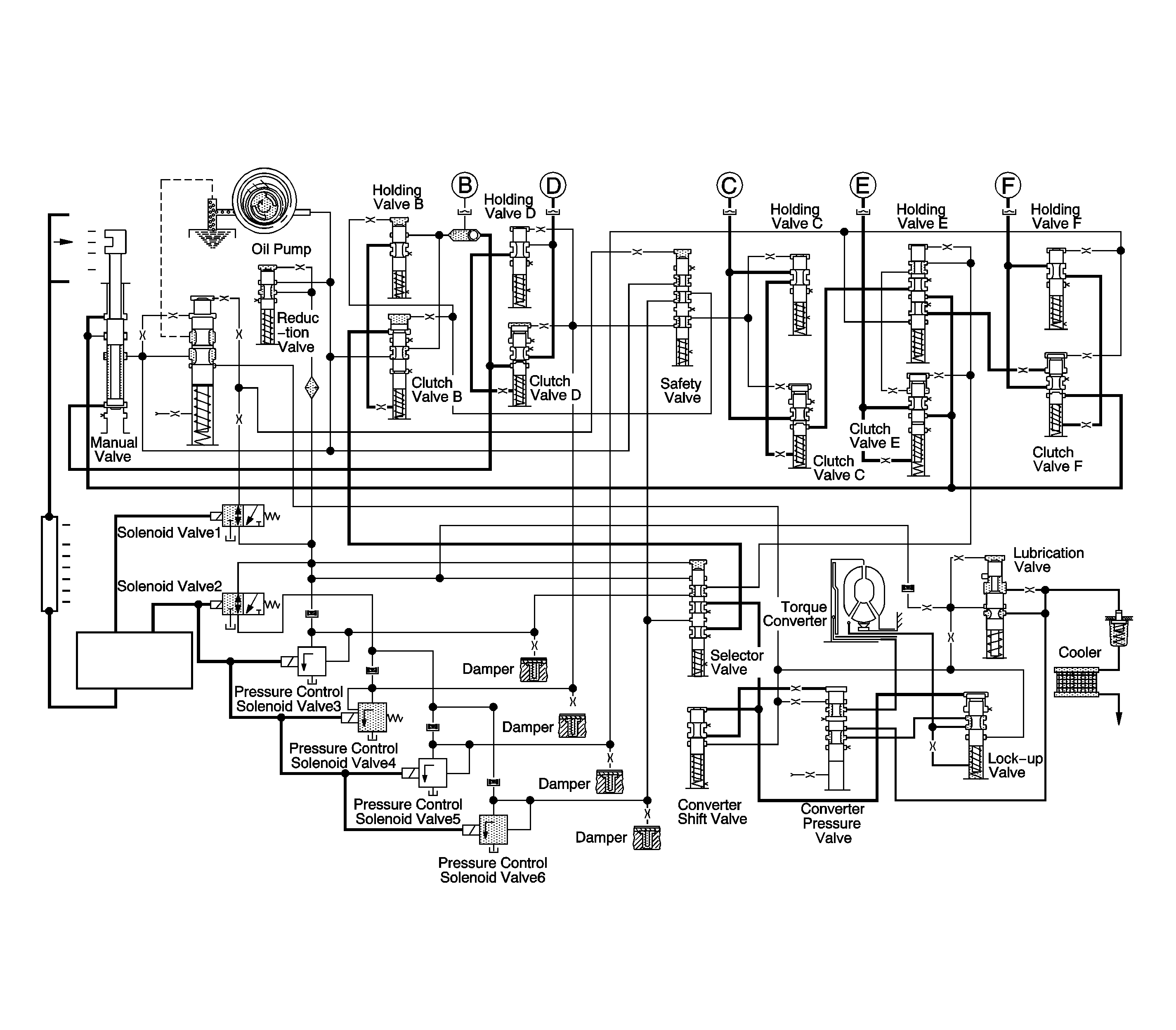
In park or neutral with the engine running there is no drive to the planetary gear set. Line pressure, from the oil pump, is supplied to the valve body. Only clutch B is supplied and the torque converter is released.
Line Pressure Control Valve
The line pressure control valve sets the general pressure level in the valve body. When gearshifts are not taking place, the line pressure varies between 2 levels, depending on the turbine torque. Line pressure increases linearly by time, but it has a limit point. When pressure reaches that point, excess oil pressure drains back into the oil pump.
Reduction Valve
The reduction valve reduces the line pressure with which the downstream solenoid valves and pressure control solenoid (PCS) valves are supplied. This makes it possible to use smaller solenoid valves.
The line pressure comes from the oil pump and flows to the reduction valve. The inlet port to the reduction valve will be blocked and line pressure will be maintained at the appropriate level.
Solenoid Valve 1, 2
Solenoid valve 1 controls the line pressure, high and low, to the clutch valves. Solenoid valve 1 is either ON or OFF. When the solenoid is turned ON the line pressure will be low 599-799 kPa (87-116 psi ). When the solenoid is turned OFF the line pressure will be high 1599-1799 kPa (232-261 psi).
Solenoid 2 controls the fluid flow to clutch valve E or the torque converter clutchTCC clutch valve. When solenoid 2 is ON, fluid is directed to the TCC pressure valve and if the solenoid is switched OFF, fluid will flow to the inlet at clutch valve E.
The transmission control module (TCM) monitors numerous inputs to determine the appropriate solenoid state combination and transaxle gear for the vehicle operating conditions.
In park and neutral solenoid valve 1 is ON. So line pressure flows to the safety valve and the line pressure control valve via the solenoid valve.
Clutch B Engaged
In park and neutral solenoid valves 1 and 2 are both ON. Pressure control solenoids (PCS) 4 and 6 are also turned ON.
When PCS 6 is ON, the fluid supplied from the reduction valve flows to the safety valve, clutch valve B, and holding valve B. The oil that is supplied to the inlet port of the clutch valve presses on the valve spool. Line pressure then flows to the holding valve and check ball, engaging clutch B.
Lock-up Clutch
Solenoid 2 is turned ON and the line pressure control valves spool will be depressed. Fluid will now flow through the torque converter pressure valve.
As a result, the oil pressure behind the converter lock-up clutch piston and in the turbine zone is equal. The direction of flow is through the turbine shaft and through the space behind the piston, to the turbine chamber.
Lubrication/Cooling
The lubricating valve ensures that the converter is supplied with cooling oil first if the pump rate is low. The lubricating pressure valve in addition guarantees that the necessary amount of cooling and lubricating oil is available via the bypass duct.
The fluid, which is supplied from the torque converter, flows to the cooler via the lubrication valve.
